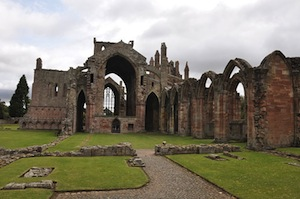St Waldef

Cistercian abbot. Of noble birth, (he was the son of Earl Simon of Northampton and Matilda, the great niece of William the Conqueror) Waldef (Waltheof) was born in 1100 and grew up in the Scottish court. He could have become a court cleric, but chose the monastic life, becoming an Austin canon at Nostell in Yorkshire. In 1134, he became prior of Kirkham. In 1140 he was a favourite to become Archbishop of York but King Stephen prevented this because he felt he would be too sympathetic to Scotland.
In his Life of Waldef, Jocelin of Furness writes: 'Waldef's face was the faithful interpreter of the inner man and gave convincing evidence of the indwelling of the Holy Spirit inhabiting his heart. It was thin, but fair except where ruddy colour infused his cheeks, soft as doves. His handsome white hair was in keeping with his reverend and religious character. His appearance showed grace infusing his spirit with happiness and exultation; it expressed the fact that the lord treasured him, and induced all who saw and spoke to him to hold him in affectionate reverence.'
St Waldef wanted to bring the Cistercians at Rievaulx and the Austins at Kirkham together, but the canons objected strongly. In 1149 he became abbot of Melrose, taking over from someone who had a notorious temper. St Waldef developed a reputation for great kindness, gentleness and humility. He went on to found monasteries at Cultram and Kinross. In 1159 he was asked to be bishop of St Andrews but he refused as he knew death was near.
Jocelin also recalls that Abbot Waldef was prone to take a nap whilst riding his horse, 'Brother Grizzel'. On such occasions the horse would pick his steps carefully and slowly, lest he should trip, but once the abbot was awake he would gallop swiftly, overtaking other steeds. Following Waldef's death, the horse was distraught and simply wasted away through sadness.
St Waldef was never formally canonised but a popular cult grew around him until the Reformation. During his life, many wonders were said to have taken place including visions at Christmas and Easter and miracles of multiplying food.












